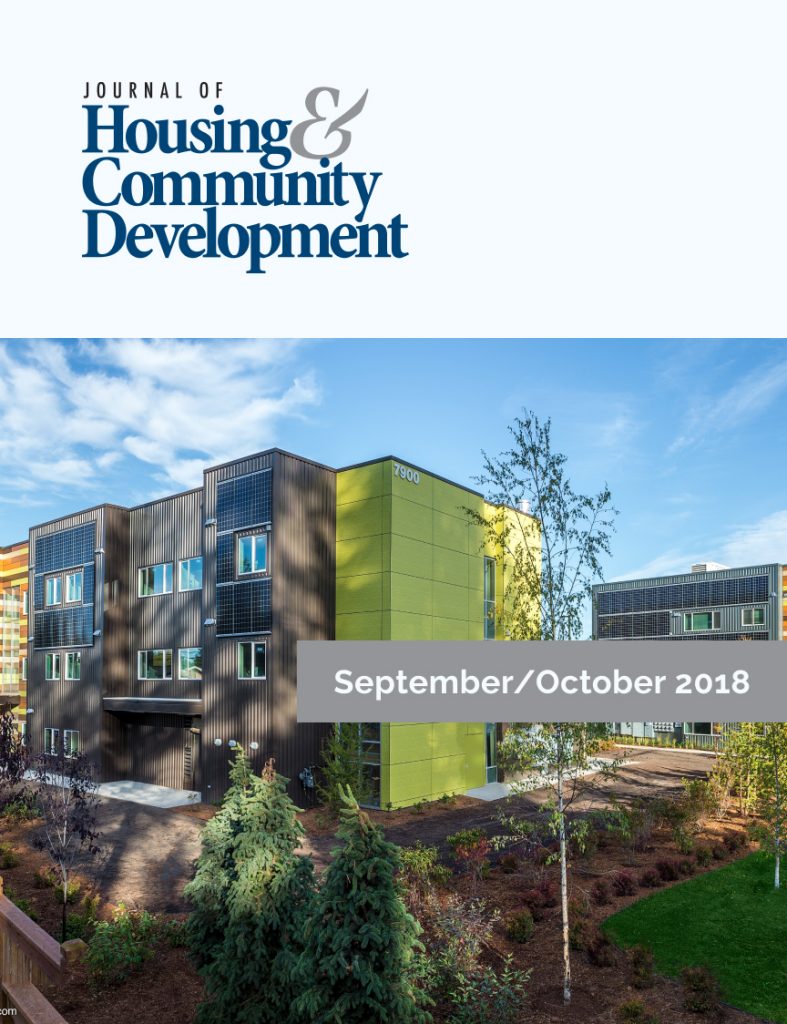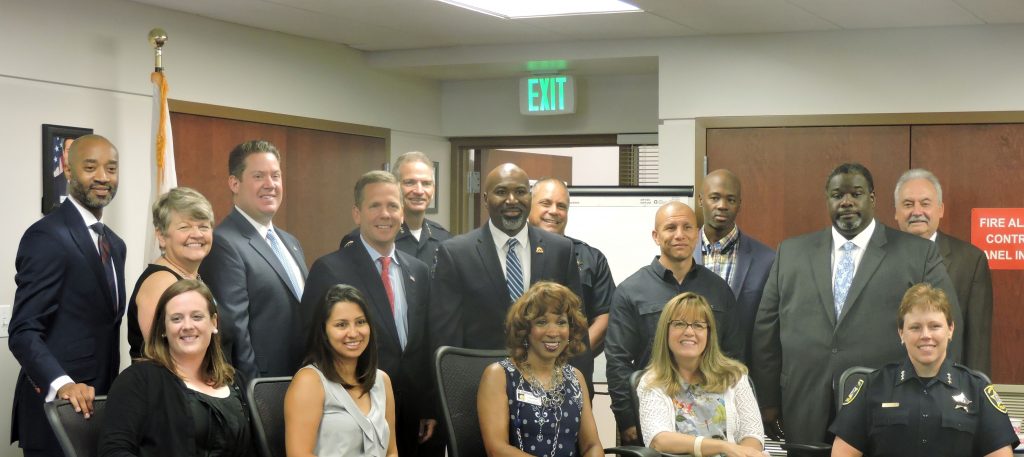Innovation in the City by the Bay: The 2018 NAHRO Summer Conference
After an entire day of pre-conference committee meetings, Innovate 2018: IMAGINE officially began at 5:00 p.m. on Thursday, July 26, with the traditional First-Time Attendees meeting. NAHRO CEO Adrianne Todman, NAHRO President Carl S. Richie, Jr., Director of Member Services and Customer Relations, Lori Myers-Carpenter, and numerous NAHRO leaders were on hand to welcome newcomers and to provide tips on getting the most out of the conference.
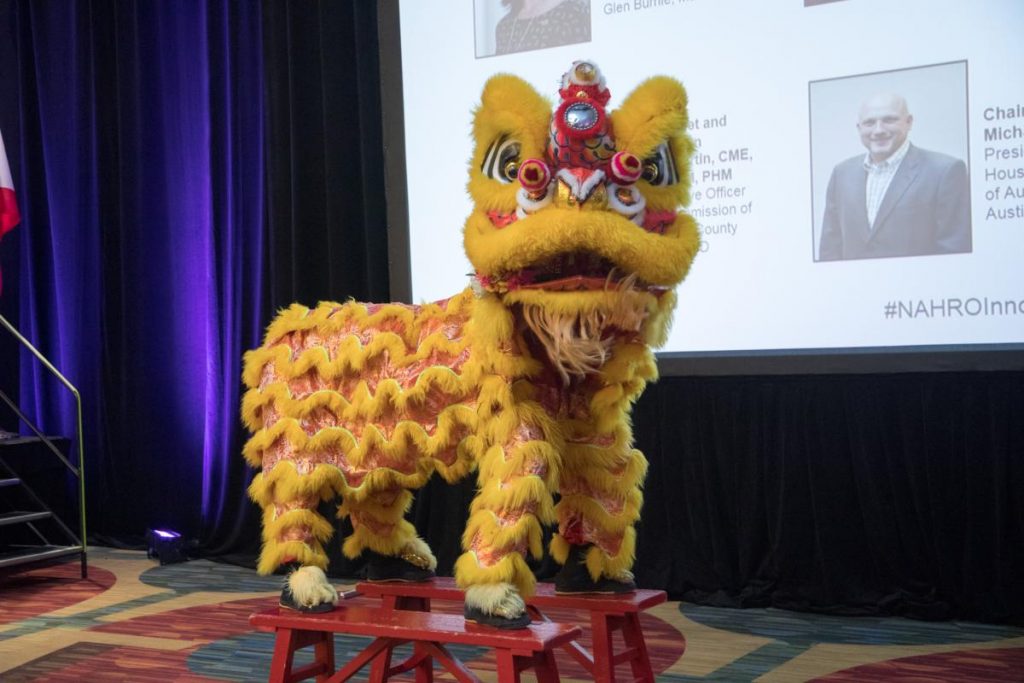
Friday morning’s Opening Plenary Session began with a rousing lion dance and an address from NAHRO President Carl S. Richie, Jr. Housing America Task Force chair Richard Herrington, Jr. joined him onstage to announce the seven winners of the 2018 NAHRO Merit College Scholarship. Local hosts Rob Fredricks, President of the Pacific Southwest Regional Council, and Barbara Smith, Acting Executive Director of the San Francisco Housing Authority, and Joaquin Torres, Deputy Director of the Invest in Neighborhoods initiative of the Mayor’s Office, then welcomed NAHRO members to the city and the conference. Continuing the local theme, former NAHRO President (also the association’s first female president) Helen Sause, who also oversaw the $3 billion Yerba Buena Center project next to the conference hotel, spoke about the redevelopment of San Francisco.
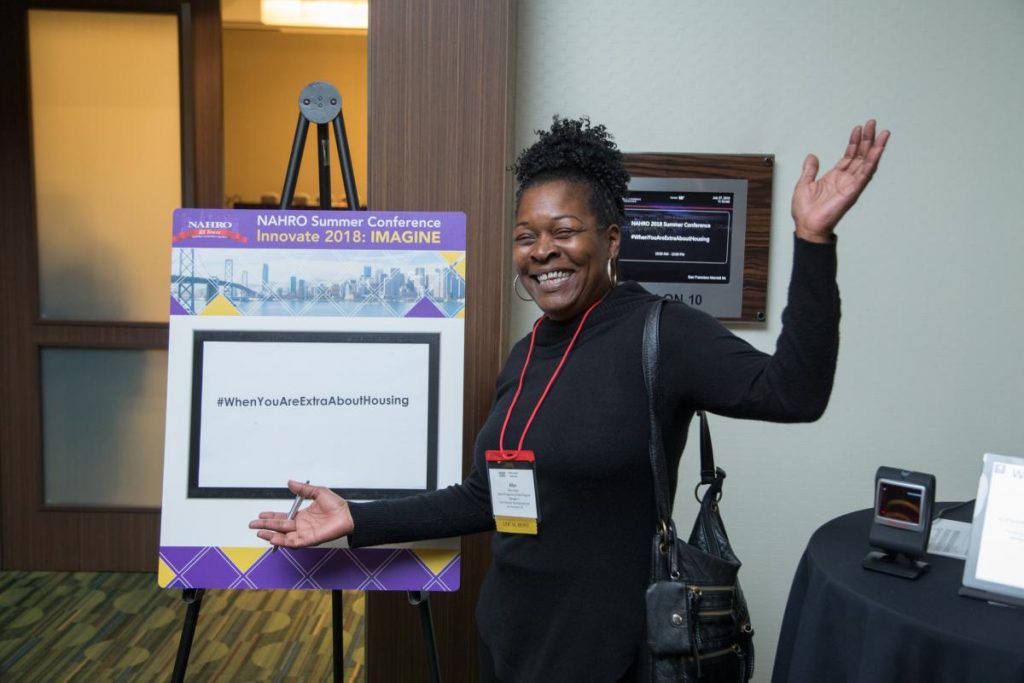
Daniel Lurie, CEO of The Tipping Point, Inc., spoke about creating public-private partnerships for affordable housing and poverty alleviation, then settled down for a brief fireside chat with NAHRO Senior Vice-President Sunny Shaw. The second main speaker, human resources executive and youth advocate Steve Pemberton, captivated the audience with an inspirational retelling of how he overcame a difficult childhood in foster care with both determination and help from loving members of his community.
Next came the first bank of concurrent sessions: a NAHRO staff-provided Washington Report on the latest HUD and Capitol Hill happenings; “#WhenYouAreExtraAboutHousing,” which focused on the creation of holistic team models; “RAD: A Renaissance through Rehabilitation,” which detailed the SFHA’s $1.3 billion Rental Assistance Demonstration (RAD) conversion; and “Non-Profit Corporations: The Why, What, and How of a 501c3 Subsidiary.” The morning also featured a certification examination period and two NAHRO Professional Development seminars.
The post-lunch set of concurrent sessions included “Advocacy and Media: Maximizing Your August Recess”; “Innovation Possibilities with Moving to Work,” in which experts from Colorado, the District of Columbia, and two California cities discussed how the flexibility provided by the Moving to Work (MTW) demonstration program helped shape their processes and allowed them to develop customized programs to address local issues such as; “Talent Mobility,” which reviewed the necessary steps for starting a succession process at a public housing authority; and “Community Development Financing Toolbox – Physical and Social Neighborhood Transformation through Mixed-Income and Mixed-Use Development,” which presented success stories and discussed steps for evaluating long-term repositioning of assets, accessing new funding sources, and building partnerships. Those who were inclined to take their learning outside of the hotel had the opportunity to purchase tickets for a local housing and community development study tour.
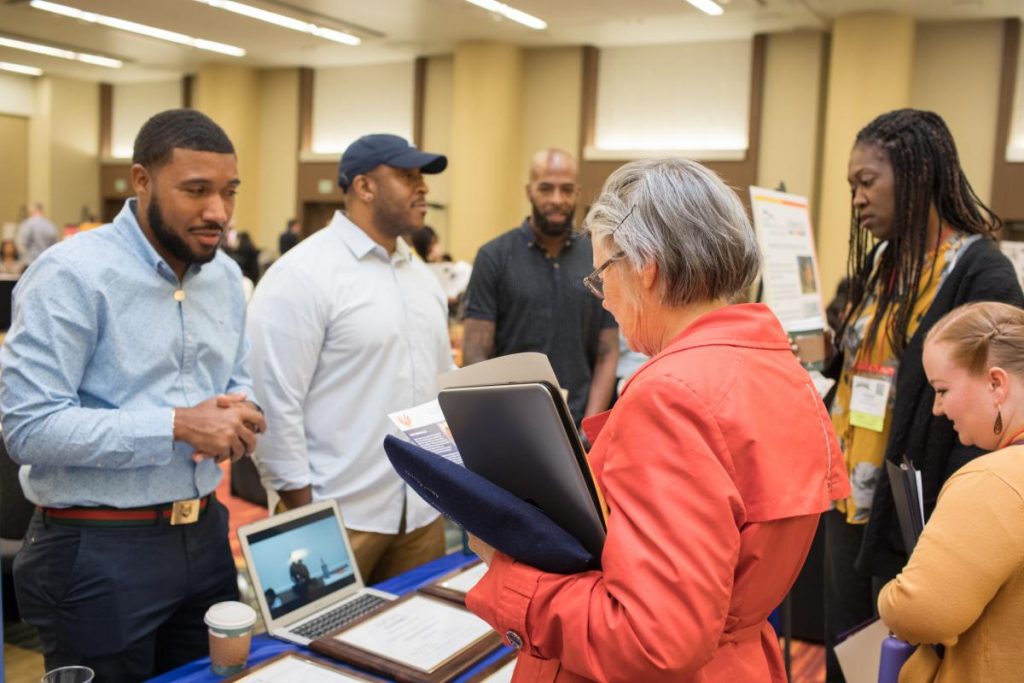
After a brief refreshment break, the second set of afternoon sessions began. In “Leasing in High-Rent Markets,” three California housing authorities discussed the challenges of maintaining and increasing landlord participation in hot rental markets; “You Were Awarded a CHAP: Now What?” addressed the challenges, pitfalls, and opportunities that can arise in the time between a successful RAD submission and the delivery of the converted units. “Housing and Education: No-Cost/Low-Cost Educational Strategies” provided suggestions on how to create an educationally-enriched housing authority, and “Can Your Executive Office Be a Catalyst for Community Development in Low-Income Neighborhoods” provided a case study on how office space needs might catalyze development in underserved areas. In “What’s New for Small PHAs? (Hint: A Lot!!),” NAHRO staff explained the small agency regulatory relief provisions of S. 2155, the MTW expansion that includes smaller housing authorities, and more. The day ended with a screening and post-film discussion of 70 Acres in Chicago: Cabrini Green, co-sponsored by Club 21 and the Diversity, Equity, and Inclusion Task Force.
Saturday opened with a learning, networking and fueling opportunity: the Awards of Merit Showcase, which allowed conference-goers to enjoy coffee and continental breakfast while discussing award-winning projects with agency representatives. Then came another full day of concurrent sessions. The first group included a discussion of the San Francisco’s HOPE SF program, an overview of Small Area Fair Market Rents (SAFMRs), “Resident Self-Sufficiency Tools: Section 3 and Workforce Development,” and “Better Health Through Housing: A Low-Cost, High-Impact Home Modification Model,” which presented an in depth look at a model developed by and for public housing authorities to safely extend the in-home time of low-income seniors and persons with disabilities while improving health and safety outcomes.
Those inclined to continue learning through lunch had a choice of two brown-bag sessions: the “International Housing Issues Update” from the International Research and Global Exchange Committee, and “Effective Behaviors for Leadership – Navigating Conflict, Engagement, and Supervision” from the Emerging Leaders Subcommittee.
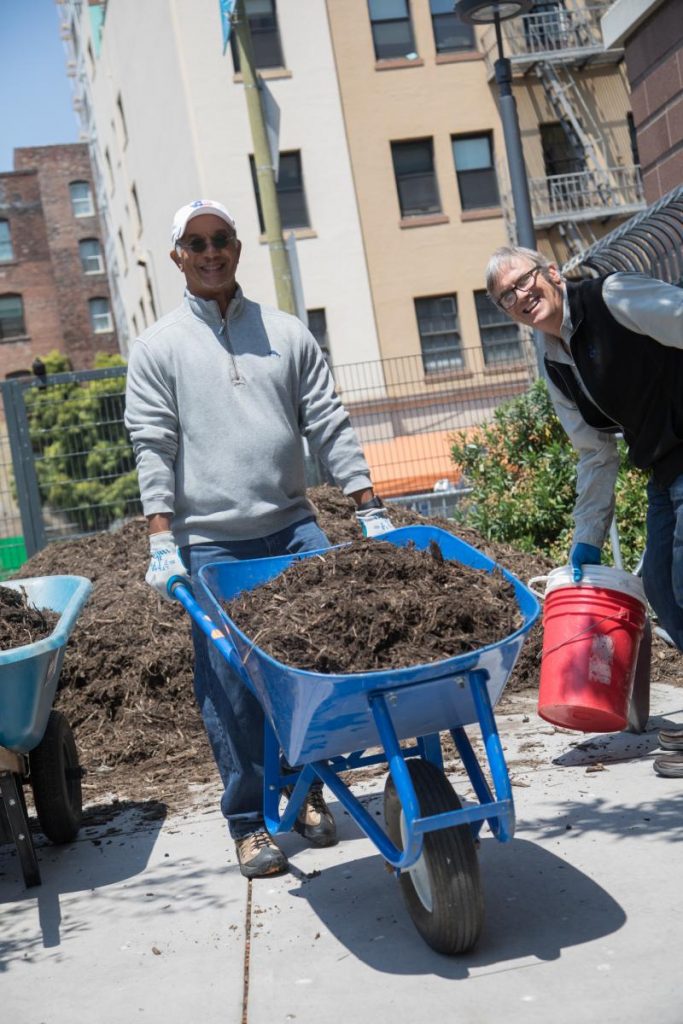
The last two groups of concurrent sessions covered a wide variety of subjects. In “Interrupting Homelessness,” representatives from the Oakland Housing Authority discussed new programs to achieve systems alignment and integrated services delivery. During “Promoting Equity and Inclusion in NAHRO,” members of the Diversity, Equity, and Inclusion Task Force discussed their work and why equity and inclusion is necessary to strengthen the association and build capacity at national, regional, state, and local levels. “HOTMA Update: Using Operating Subsidy for Capital Activities” looked at PIH notice guidance regarding an aspect of the implementation of the Housing Opportunities through Modernization Act (HOTMA).
Other sessions included “Creating Non-HUD Funding Streams for a Smooth Transition to RAD,” “MOI: The Moving on Initiative,” “Cyber Security: Protecting the PHA and Residents,” “Building a Strong Foundation: The Relationship between Commissioners and Executive Directors,” and “Utilizing Energy Performance Contracting (PEC) to Replace Old and Inefficient Distribution Systems without Relocating Residents.” The afternoon also featured a Housing America Task Force volunteer service project: cleaning and weeding the nearby Alfred E. Boedekker Park in the Tenderloin District. The day ended with a Closing Reception. The conference ended on Sunday morning, with Continental breakfast and some mental exercise at “Affordable Housing Policy Trivia,” which covered topics such as RAD, MTW, Community Development Block Grants and tax credits – a fun way to use some of what they might have learned at the seminars and concurrent sessions.
More Articles in this Issue
- HD SUPPLY
Cutting the Cord: Preparing for the Next Wave of Window Coverings
Cordless blinds and shades have several features and benefits that have contributed to their growing… Award Winner: Consortium for Superior Service
The Fort Wayne Housing Authority (Ind.) developed the Housing Strategies Meetings from the Consortium to…Award Winner: A Proactive Discussion on Race
The Lake County Housing Authority (Ill.) developed a panel discussion where law enforcement officials, government…Cities 2030, Cities for All: World Urban Forum 2018
All NAHRO representatives personally funded their trip to the World Urban Forum. They did not…Award Winner: The Growing Experience
The Housing Authority of the County of Los Angeles (Calif.) developed an innovative community garden…
